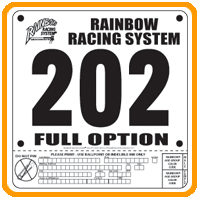©Copyright FINISH LINE PROS. All rights reserved.


Now Powered By:


Manual (Pull Tag) Timing
Computerized, manual timing, as performed by Finish Line Pros, is a proven system for capturing runner's times and runner's places, then combining the two to generate results. Although reliable for small to medium-sized races, manual timing requires a little more time to compile results, especially if the finish line is not carefully controlled.



Pull tag timing requires one person to record finishing times, and another to record finishing place by bib number. As times are recorded, the pull tags from the runners' race bibs are collected in the order the runners cross the finish line. At the end of the race, the number of times recorded should equal the number of pull tags collected. The first pull tag number is matched with the first recorded time; the second pull tag number is matched with the second recorded time, and so on. Once the two lists are matched, specialized timing software generates the results.
Pull tag
Chip (UHF RFID) Timing
Chip timing utilizes radio frequency identification (RFID) to automatically record individual runner finish times. Although there are several proprietary brands of chip timing systems in use today, Finish Line Pros uses the time-proven race\result timing system which utilizes transponders (chips)attached to the back of the runners' race bibs. Each timing chip is encoded with a unique identification signal and is assigned to each runner before a race.

As the chip passes over the mats, the magnetic field created by the mats (antennae) energizes the chip and causes it to send its unique signal which is picked up by the mats and transmitted to the controller box. As each chip has a unique signal which has been assigned to a specific runner for that race, the system can accurately record when each runner crosses the timing mat; specialized software takes this data and compiles it in finished results.
"Net" chip timing uses a second complete chip timing system at the starting line to allow for measuring only the time each runner is actually on the course. This is especially important for larger races where runners at the back of the field can take several minutes to cross the starting line.
"Net" chip timing uses a second complete chip timing system at the starting line to allow for measuring only the time each runner is actually on the course. This is especially important for larger races where runners at the back of the field can take several minutes to cross the starting line.
©Copyright FINISHLINE PROS. All rights reserved
Chip timing tends to be more expensive than manual timing because of the cost of the timing chips. race|result timing chips are designed for one-time use and can be thrown away (or kept as a souvenir!) after the event. For larger races this can be a big time-saver and free up valuable volunteers for other duties.

